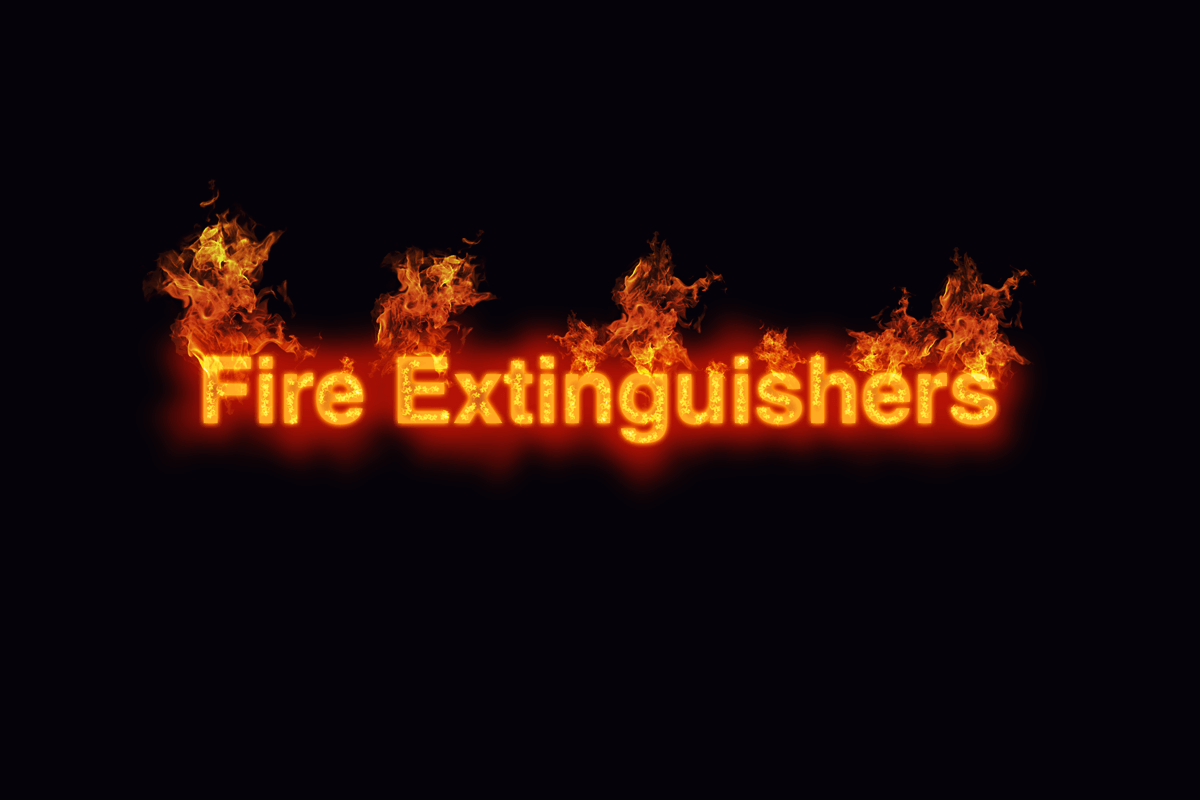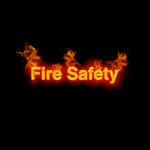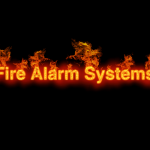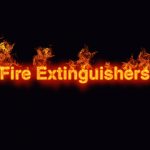A CO2 Fire Extinguisher is the extinguisher of choice for electrical fires. It also works on flammable liquid (Class B) fires and is often paired with a foam extinguisher.
Contents
- 1 Where Can a CO2 Fire Extinguisher Be Used?
- 2 Where Can a CO2 Fire Extinguisher Not Be Used?
- 3 How Do You Identify a CO2 Fire Extinguisher?
- 4 What Are CO2 Fire Extinguishers Also Known As?
- 5 How Do CO2 Fire Extinguishers Work?
- 6 What Are the Pros and Cons?
- 7 Who Needs CO2 Fire Extinguishers?
- 8 How Do You Use a CO2 Fire Extinguisher?
- 9 Our Services
Where Can a CO2 Fire Extinguisher Be Used?
This fire extinguisher type can be used on fires in varying situations, these include:
- Electrical fires, in this cases the fire involves equipment such as generators or computers
- Class B fires; fires that involve flammable liquids such as paint, diesel, or petrol
Where Can a CO2 Fire Extinguisher Not Be Used?
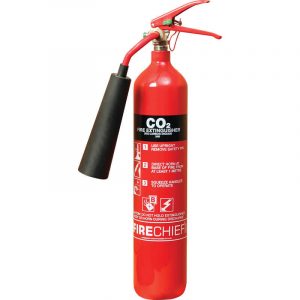 These fire extinguishers should not be used on Class F fires. These are cooking fires where oil or grease are involved, such as a chip pan fire.
These fire extinguishers should not be used on Class F fires. These are cooking fires where oil or grease are involved, such as a chip pan fire.
How Do You Identify a CO2 Fire Extinguisher?
There are several identifying factors which are as follows:
- There will be a BLACK coloured label on the body of the extinguisher which will read: CO2
- The nozzle has a noticeable black horn
- There should be an extinguisher ID sign close by which will read – CO2 EXTINGUISHER
What Are CO2 Fire Extinguishers Also Known As?
The following names can also be used for this fire extinguisher type:
- Carbon dioxide extinguisher
- Carbon dioxide fire extinguisher
How Do CO2 Fire Extinguishers Work?
CO2 gas (carbon dioxide) is stored in the extinguisher as a liquid. When the handle is squeezed, it causes pressure which then discharges the CO2 as gas.
The creation of the gas under such pressure causes the CO2 gas to emerge at a very high speed. Hence, they should not be used for the likes of chip pan fires due to the flames being blasted into other areas close by.
The principle that this fire extinguisher type works on is replacing the oxygen that surrounds a fire with carbon dioxide; hence, the fire cannot continue to burn. This is in contrast to using water or a foam extinguisher to cool a fire. This is why a CO2 fire extinguisher is not the right choice for a fire that involves flammable solids.
What Are the Pros and Cons?
Pros
There are two main pros. The first is that they are extremely effective on electrical fires. The second is that no residue is left behind following their use.
Cons
There are several cons, and these are listed as follows:
- A risk of the user getting a cold burn if the extinguisher is held by the horn
- They are not as environmentally friendly as other extinguisher choices
- They pose a risk of asphyxiation in confined spaces since they work on the principle of replacing oxygen with carbon dioxide
Who Needs CO2 Fire Extinguishers?
For premises with live electrical fires, having a CO2 fire extinguisher should be a standard issue. Such premises include:
- Hospitals
- Schools
- Shops
- Offices
How Do You Use a CO2 Fire Extinguisher?
Safety Notes:
- Do not hold a CO2 fire extinguisher by the horn
- Do not use a CO2 fire extinguisher in a confined space
- Always remove the safety pin first to break the anti-tamper seal and stand at a safe distance
Using a CO2 Fire Extinguisher
- Aim the horn towards the base of the fire and then move the jet in a backward and forward motion
- For electrical fires, the electrical item should be switched off if it is safe to do so
- For liquid fires, care should be taken so that the burning liquid is not splashed onto areas close by
Our Services
If you need a fire extinguisher service, our accredited consultants will attend your sites at a time convenient to you. Contact us today to arrange a visit and decide on the future course of action.

